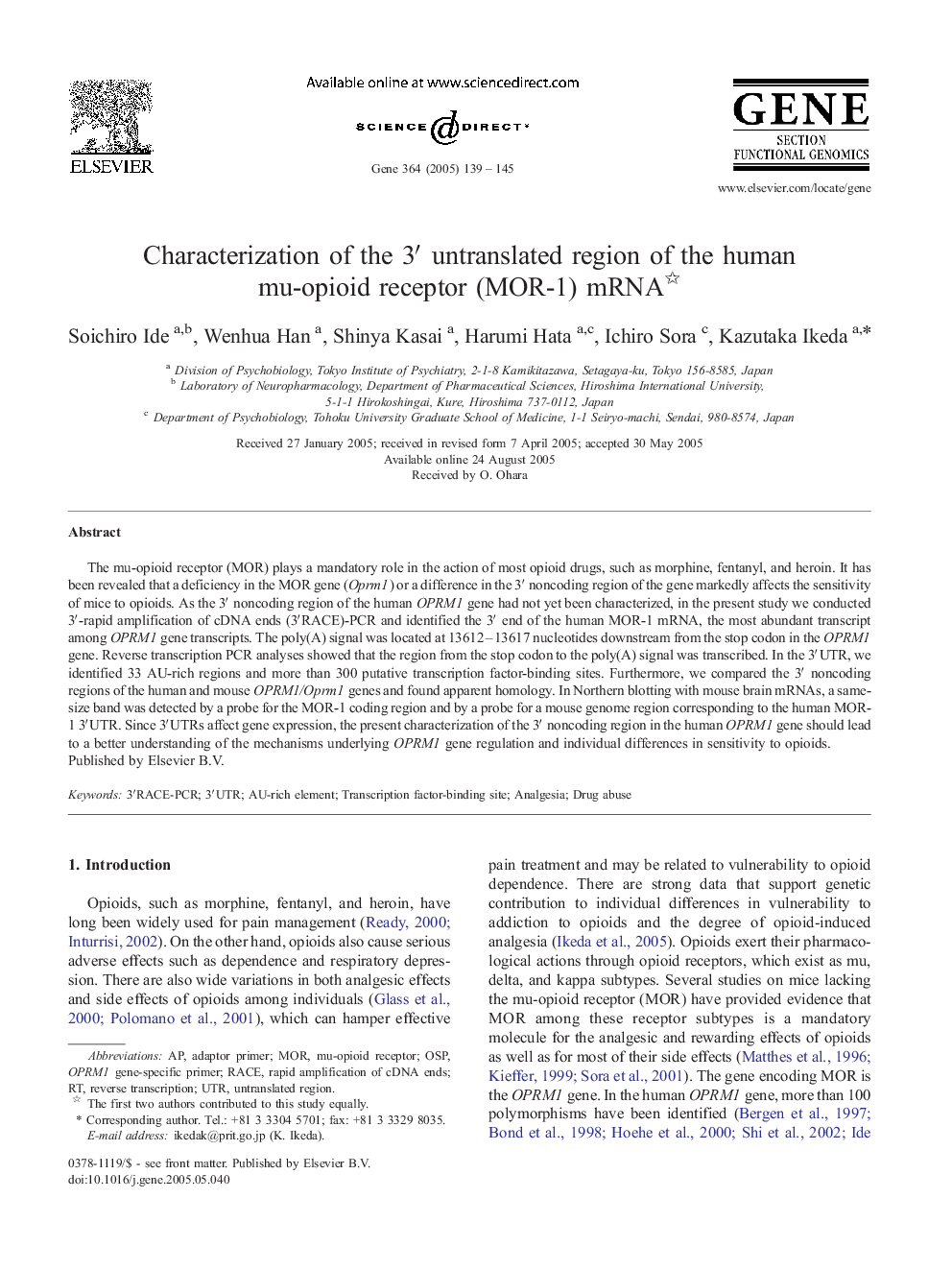| Article ID | Journal | Published Year | Pages | File Type |
|---|---|---|---|---|
| 9126842 | Gene | 2005 | 7 Pages |
Abstract
The mu-opioid receptor (MOR) plays a mandatory role in the action of most opioid drugs, such as morphine, fentanyl, and heroin. It has been revealed that a deficiency in the MOR gene (Oprm1) or a difference in the 3â² noncoding region of the gene markedly affects the sensitivity of mice to opioids. As the 3â² noncoding region of the human OPRM1 gene had not yet been characterized, in the present study we conducted 3â²-rapid amplification of cDNA ends (3â²RACE)-PCR and identified the 3â² end of the human MOR-1 mRNA, the most abundant transcript among OPRM1 gene transcripts. The poly(A) signal was located at 13612-13617 nucleotides downstream from the stop codon in the OPRM1 gene. Reverse transcription PCR analyses showed that the region from the stop codon to the poly(A) signal was transcribed. In the 3â²UTR, we identified 33 AU-rich regions and more than 300 putative transcription factor-binding sites. Furthermore, we compared the 3â² noncoding regions of the human and mouse OPRM1/Oprm1 genes and found apparent homology. In Northern blotting with mouse brain mRNAs, a same-size band was detected by a probe for the MOR-1 coding region and by a probe for a mouse genome region corresponding to the human MOR-1 3â²UTR. Since 3â²UTRs affect gene expression, the present characterization of the 3â² noncoding region in the human OPRM1 gene should lead to a better understanding of the mechanisms underlying OPRM1 gene regulation and individual differences in sensitivity to opioids.
Keywords
Related Topics
Life Sciences
Biochemistry, Genetics and Molecular Biology
Genetics
Authors
Soichiro Ide, Wenhua Han, Shinya Kasai, Harumi Hata, Ichiro Sora, Kazutaka Ikeda,
